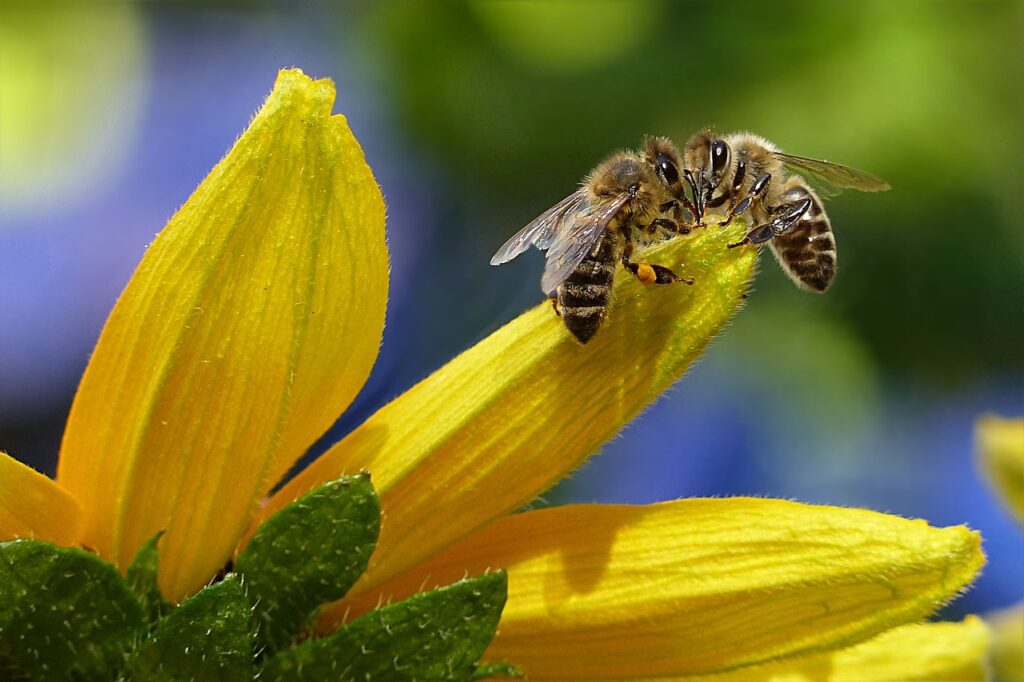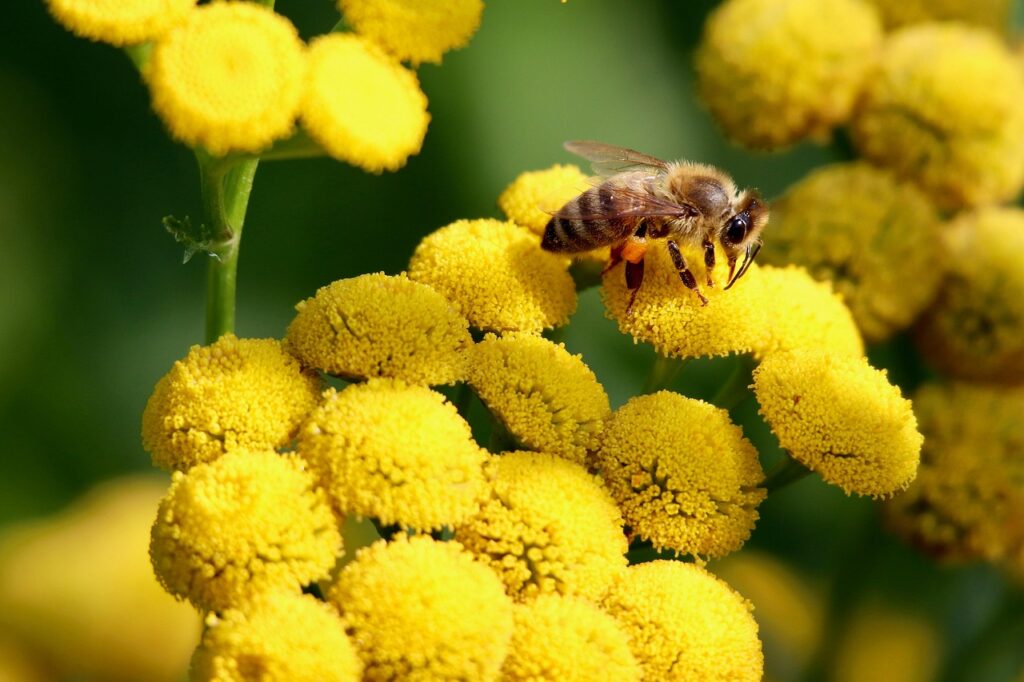The most effective strategies to address multiple threats to bees is by combining community habitat restoration with pesticide reduction, improved disease and parasite management, climate adaptation measures, sustainable agriculture, public education, and strong policy frameworks.
Top Strategies to Address Multiple Threats to Bees
1. Habitat Restoration and Protection
- Planting Native Flowers and Trees: Restoring and preserving bee habitats is fundamental. Efforts include planting native wildflowers, shrubs, and bee-friendly trees in gardens, parks, farms, and urban spaces, supporting both forage and nesting.[1][2][3]
- Creating Habitat Connectivity: Establishing corridors and reducing habitat fragmentation help bees move between foraging and nesting sites, increasing their resilience to environmental change.[4]
- Leaving Natural Features: Providing bare soil patches (for ground-nesting bees), logs, stems, stumps, and woody debris supports diverse nesting requirements.[3][1]
2. Reducing Pesticide Use
- Chemical-Free Practices: Avoiding or minimizing the use of synthetic pesticides, herbicides, and fungicides is critical. Integrated Pest Management (IPM) promotes prevention and lower toxicity alternatives.[5][1]
- Best Management Practices (BMPs): Apply pesticides only when pollinators are inactive, maintain equipment, and avoid pesticide drift onto nearby bee-friendly plants.[6][7]
- Policy Measures: Supporting bans or restrictions on harmful pesticides, such as neonicotinoids, at the governmental level.[1]
3. Improved Disease and Parasite Management
- Varroa Mite Control: Targeted treatments (e.g., thymol, formic acid), breeding for disease-resistant bee stocks, and improved apiary hygiene reduce disease spread.[8][9][10]
- Reducing Colony Transmission: Limit colony density, properly orient hives, clean equipment between inspections, and avoid moving infected frames. Policies restricting movement and mixing of colonies for pollination services can help reduce disease transmission on a larger scale.[9][10]
- Nutritional Support: Ensuring access to diverse, high-quality forage can boost bees’ immune systems and overall health.[9]
4. Climate Change Adaptation and Mitigation
- Restoring Diverse Habitats: Climate-resilient restoration—using a wide variety of native plants with offset blooming periods—buffers bee populations against uncertain climate effects and phenological mismatches.[11][4]
- Protecting and Expanding Green Spaces: Forest conservation, city green spaces, and planting windbreaks near farms help maintain stable microclimates for bees.[3]
- Monitoring and Scientific Research: Ongoing evaluation of climate impacts on bee populations supports adaptive management and guides future conservation actions.[12][4]
5. Supporting Bee-Friendly Agriculture
- Promoting Pollinator-Friendly Farming: Intercropping, crop rotation, maintaining hedgerows, and reduced tillage benefit bees. Farmers can be incentivized to use bee-friendly practices.[13][14]
- Encouraging Local and Organic Food: Consumer support for organic and sustainably grown food reduces pesticide use and promotes biodiversity.[1]
6. Community Engagement, Policy, and Education
- Public Education: Outreach about bee needs, threats, and conservation actions fuels grassroots support and informed decision-making in communities.[15][1]
- Citizen Science and Monitoring: Involving citizens in monitoring pollinator health and participating in local habitat restoration projects increases effectiveness.[4]
- Supporting Legislation: Advocating for laws that protect pollinators, habitats, and restrict harmful chemicals gives conservation efforts necessary support and enforcement.[6][1]
In summary:
The most effective strategies combine habitat restoration with pesticide reduction, improved disease and parasite management, climate adaptation measures, sustainable agriculture, public education, and strong policy frameworks. When implemented together and tailored to local needs, these approaches create resilient ecosystems that support diverse and healthy bee populations worldwide.[6][4][1]
⁂
- https://thebeeconservancy.org/10-ways-to-save-the-bees/
- https://www.fs.usda.gov/inside-fs/delivering-mission/sustain/state-wide-bee-conservation-strategy-blooms-washington
- https://www.triplepundit.com/story/2025/protecting-bees-forest-conservation/818681
- https://www.frontiersin.org/journals/ecology-and-evolution/articles/10.3389/fevo.2024.1358621/full
- https://beecityusa.org/support-pollinator-conservation-by-reducing-or-eliminating-pesticide-use-in-your-community/
- https://www.epa.gov/pollinator-protection/tools-and-strategies-pollinator-protection
- https://ipm.ucanr.edu/mitigation/protect_bees.html
- https://www.ceid.uga.edu/2022/05/05/controlling-pathogens-in-honey-bee-hives/
- https://extension.psu.edu/viruses-in-honey-bees/
- https://pmc.ncbi.nlm.nih.gov/articles/PMC5749923/
- https://bestbees.com/climate-change-and-bees/
- https://pmc.ncbi.nlm.nih.gov/articles/PMC10889774/
- https://www.xerces.org/endangered-species/wild-bees
- https://bestbees.com/habitat-restoration/
- https://earthshotprize.org/news/bee-kind-10-ways-to-help-protect-bees-and-give-nature-a-boost/



